I watched closely as my over-tied size 12 Adams tumbled off the gravel ridge and dropped atop the bucket at the head of a long run. The big dry swirled into the river’s current, forcing me to mend my line to extend the drift. A massive head the size of a grown man’s fist pushed from the water and sucked in the hapless fly. The floating fly line yanked tight, and the heft on the end of the line was admirable. I lifted the rod and knew I was into a big Rio Chimehuin brown. Like … really big. And then, just as quickly as the line had snapped tight, the fish was gone.
Andres, my guide for the day at Estancia Tres Rios, a stunning destination in Argentina’s northern Patagonia region, audibly slapped his forehead in exasperation.
“That was the fish, Chreeesss!” he said in his wonderfully accented English. “That was the one!”
My line lay flaccid in the fabled waters of the Chimehuin and all I could do was just stare into the sky and take in the stunning scenery of the canyon sliced by the river. Sometimes you catch that fish. Sometimes you spend the rest of your day listening to Jim McKay’s scratchy voiceover in your head.
“... and the agony of defeat.”
Only, the grainy film reel playing on my emotional black-and-white RCA wasn’t that of the unfortunate Slovenian ski jumper Vinko Bogataj careening down the mountain in a slurry of skis and goggles and limbs during the 1970 Ski Flying Championships in West Germany. It was of me, the very moment I went from elated to heartbroken as my fly line went from tight to slack when the big fish came unbuttoned.
But I was in Patagonia, on my first day of a 10-day tour which would be spent fly fishing Patagonia’s most famous trout streams and rivers; a tour of the waters that not only put Patagonia trout fishing on the map, but which have called to anglers from the farthest reaches of the globe ever since—from iconic angling authors of yesteryear to U.S. Presidents and British royalty to dyed-in-the-wool trout bums who stitched together their last pennies to buy flights to Argentina and figured out the rest once they got there. In the days ahead, I’d have the chance to fish heralded rivers and creeks that flow through the vast estancias of northern Patagonia—each one a testament to a region that, at least in terms of sheer trophy trout opportunity, may be unmatched anywhere in the world. Standing in the chilled waters of one of those rivers, I knew that I’d have another shot at a big brown trout the next day. And the day after that. And so on.
Screw you, McKay.

Rio Chimehuin and Estancia Tres Rios
River size: Medium to large
River type: Freestone
Fishing style(s): Float and walk-and-wade
There may be no stretch of water in all of South America more responsible for Patagonia’s sterling reputation as a fly fishing paradise than Rio Chimehuin. Since Joe Brooks first fished the river with Jose “Bebe” Anchorena more than 70 years ago and was inspired to pen the story “Boca Fever” in the pages of Outdoor Life, anglers have been traveling the globe to ply the bountiful waters of the Chimehuin. And with good reason. Not much has changed in those 70 years.
The Chimehuin reminds me a lot of the rivers I’ve fished my whole life — the fabled rivers of the Rockies, from the Arkansas in south-central Colorado to the upper Green in western Wyoming. Or even the lower Henry’s Fork after it plunges over Mesa Falls. It’s big, but not intimidating, and it’s buggy as all get out — my last float of the river while staying at Tres Rios took place amid clouds of caddis so thick that they cast shadows on the water. The river flows through blonde bluffs with willows choking the banks. For me, it’s one of the rivers that feels very familiar, and for longtime fly anglers who’ve visited the American West, it’ll feel that way, too.
The part that will feel unfamiliar, except to those that have visited Patagonia before, is the lack of other anglers. In fact, if on a day spent on most Patagonian rivers, you see another angler that wasn’t sitting in the back of the pickup next to you on the way to the river or, at the very least, across the table from you at the lodge during breakfast, you’ll have experienced something unusual. It’s for this reason more than any other that people so often refer to Patagonia as like the American West—only 100 years ago. And it’s why the fishing, to this very day, is the stuff of fairy tales come true.

And, there’s the Collon Cura, a big, wide, sweeping steppe-country river that offers up unforgettable brown trout and stunning rainbows at a regular clip. Near its confluence with the Chimuehuin—and mere steps from the comforts of Tres Rios—the Collon Cura boasts dozens of floatable and walkable side channels that hold big, surly browns that must be carefully stalked.
Tres Rios Lodge, which sits perched on a bluff overlooking both the Chimuhuin and the Collon Cura rivers, is one of two estancias—along with its upstream neighbor, Estancia Tipiliuke—with prime, riverfront access to the Chimehuin. Unlike the longstanding, storied ranches of the region, Tres Rios is one of the newest lodges in Patagonia and, as result, offers a distinctly different vibe. Built in 2014 by Argentine native Lucas Rodriguez, Tres Rios is smaller and more intimate than its historic counterparts. The lodge consists of only four double-occupancy rooms, meaning that the ranch’s 10 miles of private Chimehuin River access can be fished by a maximum of eight anglers at a time.

![Scenes from Tres Rios Lodge (photos: Chad Shmukler [left, right], Matt Jones [center]). tres rios lodge | fly fishing chimehuin river | patagonia | argentina](https://www.hatchmag.com/sites/default/files/styles/preload/public/styles/full-page/public/field/image/tresrios-comp3.jpg?itok=MHNyh2BH)
Built of stacked stone and locally-sourced hardwoods, the lodge is simple and modern, yet picturesque and refined. Outside, its immaculately maintained grounds, terraced with native wildflowers, shrubs, and grasses, offer guests a welcoming patio, outdoor dining area, soaking pool, and a large fire pit for traditional Argentine asados and nighttime gatherings under the southern stars. The lodge’s modern construction and modest footprint also allow it to be remarkably green despite its remote location. Powered exclusively by solar panels and small wind turbines, the lodge is a marvel of sustainability—even sourcing much of the produce served to its clientele from its own gardens.

Rio Malleo and Estancia San Huberto
River size: Small to medium
River type: Freestone with spring influences
Fishing style(s): Walk-and-wade
A relatively short, scenic drive from the Chimehuin flows the fabled Malleo River—perhaps the world’s preeminent dry fly fishery. The river flows beneath its constant sentry, the storied and picturesque Lanin Volcano. No matter where you are on the Malleo, from its rugged and wooded upper reaches in Lanin Volcano National Park where it begins as the outflow of Lago Tromen to its arid canyon reaches flowing across the Patagonian desert to where the Malleo dumps into the Aluminé, the volcano is always there.
And, generally speaking, the fishing is stellar, from one end of the river to the other, no matter what the wallpaper looks like. Whether you’re on the expansive hectarage of Estancia San Huberto, walking and wading the meandering stream as it snakes across lush foothills meadows, or standing on the bare cliffs of the Mapuche indian reservation downstream of the ranch, looking down at the green water as it tumbles across the steppe — the Malleo’s trout love to eat on top. And subtlety is rarely necessary. Matching the hatch works well, but a dry-dropper with a Fat Albert on top might bring the biggest fish in any given run to the top for a look—and an eat.

San Huberto Lodge and the Olsen family that operates it started accepting guests almost half a century ago. But the 24,000-acre spread has been a working cattle ranch since the late 1800s. Initially a hunting lodge for introduced European red stag, San Huberto’s location on Rio Malleo soon made it one of the world’s premiere fishing lodges. Today, anglers come from all over the globe to chase brown and rainbow trout based from the estancia, both on the fabled Malleo and on the Huaca Mamuil, a smaller, spring-fed tributary to the river that boasts intimate fishing for big, wary trout.
And, as is the case at most of the estancias in the region, the fishing is only part of the experience. Back at the lodge, anglers convene on a spacious outdoor patio for drinks and appetizers before dinner, which is served in the lodge’s dining room amidst classic decor that likely inspired fishing retreats the world over. San Huberto might be as iconic as the Malleo itself.

Much of what makes time spent at San Huberto so memorable is how long the Olsens have been honing their craft. The family pioneered the art of Patagonian ranch lodging not long after Joe Brooks introduced the angling world to the region—and have been refining the lodge’s offerings ever since. There may be no destination in all of Patagonia with more experience spoiling its guests than San Huberto, now under the attentive supervision of Ronnie Olsen, son of Carmen and Carlos Olsen, who first started welcoming guests to San Huberto back in the 1970s.
A Stop in Town — San Martin de los Andes
Between estancia visits, anglers often visit the little resort town of San Martin de los Andes. Named for General Jose de San Martin—who collaborated with Simon Bolivar to ensure much of Spanish South America’s independence from Spain and who is regarded as a hero in Argentina and Peru—San Martin is rich with history.
You might think of San Martin as a hybrid between Santa Fe and Sun Valley. These days, the town is modern and tilting cosmopolitan—with shops and boutiques, dozens of restaurants including several with serious culinary chops, and even a legitimate craft beer bar (a true rarity in Argentina outside of major metropolitan centers like Buenos Aires). From a visitor’s perspective, San Martin is a sweet little spot to kill a night. It’s imminently walkable, making it easy to bounce between the great little bars and restaurants that line its streets.
San Martin also sits on the shores of Lago Lacar, and the northern Patagonia Andes tower above it. In winter, it’s a skiers paradise. In summer, it’s a launching pad for fly fishers chasing trout on rivers ranging from the Malleo to the Chimehuin.

Rio Traful and Estancia Arroyo Verde
River size: Small
River type: Freestone
Fishing style(s): Walk-and-wade
A couple of hours south of San Martin and a bit farther west and closer to the Continental Divide, the fabled Rio Traful flows through an alpine valley which is home to Estancia Arroyo Verde, a hidden oasis in the mountains. Arroyo Verde has always been a fishing lodge—one Forbes Magazine once called “the best fishing lodge in the world”—and throughout that time, Rio Traful has been a sacred river among the fly fishing glitterati. The Traful has been plied by the likes of Ernie Schwiebert and Mel Krieger, as well as President Eisenhower and King Leopold of Belgium. Downstream from Arroyo Verde, American media mogul Ted Turner owns some of the best real estate in Patagonia—the strictly private Estancia La Primavera.
The Traful flows for approximately 15 miles between two lakes—from its headwaters at Lago Traful to its mouth at Lago Alicura, which itself is fed by the mighty Rio Limay. The river is a technical fishery, often involving sight-fishing to individual, wary fish in low, clear water. But anglers have the opportunity to catch the fish of not one, but multiple lifetimes in the river’s cold, clean waters. Both brown and rainbow trout migrate into the Traful out of the two lakes that bookend the river, including specimens that push well past 30 inches long. You might be just as likely to leave the river with your net empty as you are to bring one of the Traful’s true giants to hand, but those who work the river’s bends and pools will experience—and possibly make—angling history.

Today, owner Meme Lariviere and her three daughters, Marina, Maria Luisa and Josephina, operate Estancia Arroyo Verde and they welcome fly fishers from all over the globe to their home. The lodge has been in the family for 80 years, and the ladies running the show today are classy, elegant, and Patagonian tough.
This estancia is one of the more stunning in the region, boasting mature trees on well-manicured grounds. And, after a day of fooling — or being fooled by — the Traful’s time-wizened trout, it’s a great place to unwind and enjoy a delectable meal complete with an ever-present and seemingly bottomless bottle of malbec.

The ladies who run the ranch are engaging and sincerely interested in their guests, and they’ll dive into conversations about the ranch, its rich history and, of course, the river that runs through it.
Rio Filo Hua Hum and Estancia Tres Lagos
River size: Small
River type: Freestone
Fishing style(s): Walk-and-wade
Heading back north and, over a pass and into the Caleufu River valley, Estancia Tres Lagos and the Rio Filo Hua Hum (pronounced Feelo Wah-oom) span the landscape between Lago Nuevo and Lago Filo Hua Hum. The ranch itself is stunning, with views overlooking Lago Nuevo (a serious still-water fishing option for anglers) and the Filo Hua Hum Valley. Owned for generations by the Fernandez-Beschtedt family, Tres Lagos is a working cattle ranch that encompasses nearly 80,000 acres of gorgeous Patagonian countryside. It’s also home to a massive herd of red deer originally imported from Europe for food and sport. Fall Patagonian evenings spent on the deck at Tres Lagos are punctuated by the grunts and snorts of rutting stags that sport the massive antlers coveted by hunters the world over.


We first arrived in the afternoon, too late to hit the river, and too early for snacks or dinner — so we stretched out in our spacious lake-view cabin (two anglers per unit) and relaxed. Naps were interrupted by the grunting red stags — their unique call reverberated over the water and inspired us to grab binoculars to get a glimpse of the animals transplanted all over the world by European colonialists.
While the lakes are eminently fishable — and we did spend an afternoon casting against the banks and coaxing big trout to the top — the fishing in the Filo is really what Tres Lagos is known for. While it's not a spring creek, its crystalline flow makes it feel like one. Between just a handful of tail-outs, the Filo boasts long, beech-lined slicks that require absolute stealth and patience. The payoff for such deliberate fishing could be an outsized brown that couldn’t resist a Chernobyl or an energetic rainbow that might grab the fly and leap from the creek to the “oohs and ahhs” of those watching.
Rio Collon Cura and Estancia Quemquemtreu
River size: Large
River type: Freestone
Fishing style(s): Float and walk-and-wade
There was a time when Estancia Quemquemtreu, ground zero for anglers traveling to fly fish the famed Collon Cura River, stretched from the shores of the Atlantic Ocean, clear across the Andes to lap the waves of the Pacific. Today, this still seemingly endless, 200,000-acre ranch encompasses sweeping steppe country in the Patagonian foothills of Argentina. The ranch also provides access to the far less renowned Quemquemtreu Creek, a sexy, walk-and-wade stream in the early summer and again in the late fall. The fish in this modest, calafate-lined stream are jaw-dropping. More than once, I had to pinch myself — how does something so big come from water so small? Couple the sheer sizes of the fish with the zeal with which most of its inhabitants race to suck in big dry flies and you might, rightly so, wonder why this little stream isn’t better known.
The ranch is a significant Hereford beef operation operated by Martin Zimmerman. It sports a herd that’s 5,000-head strong, and is also home to red deer, native guanaco (close relatives of the llama) and elusive pumas. The infrastructure of the estancia is sprawling—there are more than 30 buildings, including very comfortable sleeping quarters, gathering rooms, a dining room and a separate bar that sports decor finely tuned to the fly angler — historic photos of giant trout adorn the walls, and old-school fly fishing and outdoor magazines rest atop every table, begging to be thumbed through. This estancia is as historic and beloved among the worldwide fly fishing community as any other lodge or destination.


Visitors eat perhaps the finest sampling of free-range beef I’ve ever tasted, and, of course, every meal is punctuated by yet another silky bottle of malbec that provides just enough punch to properly alter your brain chemistry for the coming day on the river.
And then, of course, there’s the Collon Cura’s rainbow trout. The Collon Cura’s quick runs and tail-outs offer perhaps the fastest-paced fishing for trophy rainbows I’ve ever experienced. The first time I fished the Collon Cura was during the famed fall “minnow run,” when lake-dwelling rainbows from Embalse de Alicura, a huge reservoir that stores water from both the Collon Cura and the Rio Limay, follow the baitfish migration upriver. We spent hours running up and down the banks of the river fighting giant rainbows with more spunk than sense. Equally alluring for some anglers will be the backwater sloughs fed by the river’s freestone flows, where big brown trout—which will rise greedily to flies delicately placed by stalking anglers—stake out froggy water.

RIO LIMAY
River size: Large to enormous
River type: Freestone and tailwater
Fishing style(s): Float and walk-and-wade
The Limay is northern Patagonia's big fish river. And by big I mean enormous, like the river itself is in sections. A sweeping, high-desert river and one of the region's only tailwaters, the Limay has a character all its own. Given that the Limay is also remote, requiring long three to four hour drive times from other popular rivers in the area, it's best fished on multi-day backcountry camp trips, where anglers can maximize their time on the water. For an in-depth look at fly fishing the Limay River, read the story "High desert monsters".
Going Home
The best part of visiting Patagonia’s fabled estancias may be that, no matter where you end up at the end of the day, it almost feels like going home. The families who run the ranches are experts in hospitality, and they’ve spent generations perfecting the craft of creating welcoming oases for groups of strange fly fishers that wander through their living rooms every Patagonian spring, summer, and fall. It’s a uniquely Argentine adventure—chasing trout in rivers so big, vast and largely untouched, and then returning to a comfortable, homey outpost in the middle of nowhere, only to be pampered with some of the best cooking on earth and coaxed into a state of near-Elysium by good whiskey and better wine.
I have trout in my eastern Idaho backyard that swim in waters that cross land I can access on a whim. But fly fishing in Argentina is a cultural endeavor, not just a physical exercise. It’s about community and the opportunity to experience something most anglers never will. It’s also a time warp—think Montana half a century ago, or Colorado before Denver was more than a supply town. Fly fishing for trout in Patagonia is an adventure. These rivers are wild. They are sparsely visited. They pulse with wild fish. When you think of world-class fly fishing, Patagonia is the barometer by which “world class” is measured.
IF YOU GO
Choosing a Lodge/Outfitter
Anglers seeking to fly fish the famous waters of Patagonia in Argentina have a myriad of options. There are a wide array of fishing lodges, independent guides, and classic estancias that cater to anglers throughout the fishing season. Anglers can even fish most of the region’s famous rivers and streams on their own, thanks to Argentina’s Montana-style water access laws. Those hoping to experience a wide breadth of all that Argentina has to offer may have no better option than Patagonia River Guides, which specializes in crafting custom itineraries that offer anglers the opportunity to tour the region’s historic estancias and sample its finest trout fisheries.
When to Go
Trout season throughout most of northern Patagonia begins in November and ends in May.
How to Get There
Most anglers visiting northern Patagonia travel through Buenos Aires to San Martin de los Andes or, alternatively, to Bariloche. Depending on each guest’s origin, travel sometimes requires—or at the very least, is made easier by—spending an overnight in Buenos Aires, sampling everything the “Paris of the south” has on the menu.




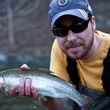
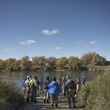
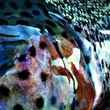
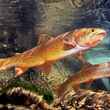


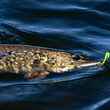
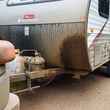


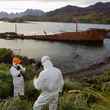
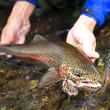



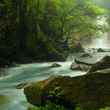
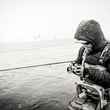



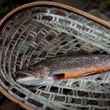
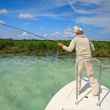



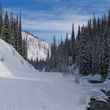
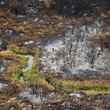
Comments
José Ignacio Bettolli replied on Permalink
Sorry, but is imposible to Collón Cura river to " lap the waves of the Pacific Ocean", because it finishes in the patagonic lake of Alicura.
Thanks
Chad Shmukler replied on Permalink
Doug replied on Permalink
Nice article and review of the fancy lodges, but it is entirely possible to go without "adult supervision". A minimalist trip will allow you to rent a car and fish for three weeks for the cost of three days at a lodge. A luxury house in San Martin with guides picking you up at the door costs about 30% of what you pay at a lodge. With the Argentine currency so low, the famous lodges are charging Alaska prices and have far lower overhead.
Steve replied on Permalink
Having fished all of the rivers the author mentions I can verify his fish stories. Patagonia is what the west was like 50 years ago, Great fish and no crowds. Cheaper than Alaska and better trout fishing..
Pages